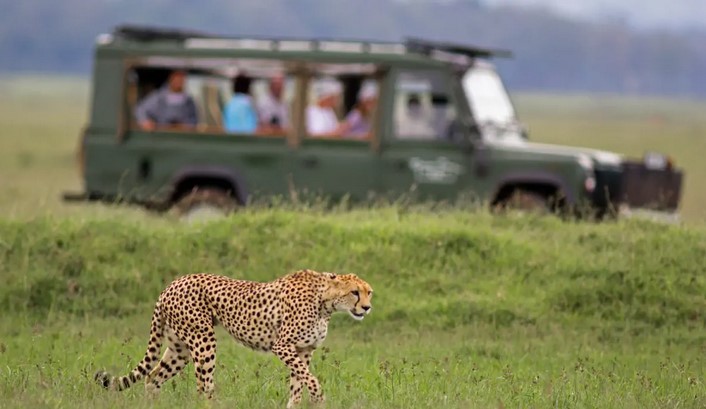
Kenya, a jewel of East Africa, is synonymous with epic wildlife, sweeping savannahs, and some of the most iconic safari experiences on the planet. For those seeking the thrill of the wild without sacrificing comfort, Kenya safari lodges offer the perfect balance between adventure and luxury. These lodges are not only strategically located near renowned national parks and reserves but also designed to immerse travelers in the natural environment with all the conveniences of modern hospitality. Whether nestled in the shadow of Mount Kilimanjaro or overlooking the vast plains of the Maasai Mara, Kenya safari lodges provide an unforgettable blend of culture, wildlife, and world-class accommodation.
1. The Diversity of Kenya’s Safari Lodges
Kenya’s safari lodges vary widely in style, scale, and setting, catering to every type of traveler—from honeymooners and families to photographers and conservation enthusiasts. What unites them is their deep connection to the environment and the unique wildlife experiences they offer.
In the Maasai Mara, one of Africa’s premier wildlife destinations, safari lodges often feature panoramic views of the savannah and are situated along migration paths. Guests may witness the famed Great Migration right from their balconies. Lodges like Angama Mara and Mara Serena Safari Lodge offer a mix of tented suites and stone cottages, all equipped with modern amenities and private verandas.
In contrast, Samburu in northern Kenya provides a more rugged, less-traveled experience. Here, lodges such as Saruni Samburu are built into rocky hillsides, offering breathtaking views of remote wilderness and encounters with unique species like the Grevy’s zebra and reticulated giraffe.
At Amboseli, lodges often face the majestic Mount Kilimanjaro, allowing for postcard-worthy sunrises behind the iconic peak. The wildlife here, particularly the large elephant herds, add another layer to the experience.
2. Sustainability and Community Involvement
A key strength of Kenya safari lodges is their emphasis on sustainability and community integration. Many lodges are designed using eco-friendly principles, utilizing solar energy, rainwater harvesting, and biodegradable products to minimize their ecological footprint.
Operators like Elewana Collection, Governors’ Camp, and Lewa Safari Camp go beyond just reducing environmental impact—they actively contribute to conservation and local development. For example, profits from some lodges help fund anti-poaching initiatives, education programs, and healthcare services for nearby communities.
Additionally, many safari lodges employ local staff and collaborate with indigenous tribes such as the Maasai and Samburu. Guests often have the opportunity to learn about traditional customs, visit local villages, or participate in cultural evenings. This integration enriches the travel experience while ensuring that tourism directly benefits the communities that serve as custodians of these landscapes.
Subheading: Lodge Features That Enhance the Safari Experience
While wildlife is the main draw, Kenya safari lodges enhance the journey with features that offer comfort and relaxation after exhilarating game drives. Most lodges include en-suite bathrooms, private decks, Wi-Fi in main areas, and even plunge pools in luxury options.
Gourmet dining is another standout feature. Many lodges prepare meals using fresh, locally sourced ingredients, often blending Kenyan flavors with international cuisine. Dining may take place in elegant restaurants, open-air terraces, or even out in the bush under a canopy of stars.
Evenings are often spent around the campfire, sharing stories with guides and fellow travelers, while early mornings might include coffee delivered to your tent and guided walking safaris led by experienced rangers and naturalists. These personalized touches ensure that guests not only enjoy the wildlife but also feel part of the environment.
In addition, lodges offer a variety of safari activities:
- Game drives at dawn and dusk
- Hot air balloon safaris for a bird’s-eye view of the plains
- Nature walks that focus on flora, insects, and tracking animal prints
- Night safaris in conservancies for a glimpse of nocturnal creatures
3. Planning the Perfect Safari Lodge Experience
To make the most of a safari lodge experience in Kenya, planning is key. The best times to visit are during the dry seasons—January to March and July to October—when animals gather around water sources and vegetation is sparse, making wildlife easier to spot.
Travelers should consider the type of wildlife they want to see, the level of luxury desired, and the lodge’s proximity to airports or road access. Some lodges are only accessible by charter flights, which adds to the adventure but also requires more detailed coordination.
Vaccinations, travel insurance, and packing appropriate clothing (layered, neutral colors) are also important steps. Reputable tour operators can assist in booking lodges, arranging transport, and tailoring the itinerary based on personal interests.
It’s also wise to check whether a lodge is within a national park or in a private conservancy. The latter often allows more flexibility, such as off-road driving and guided bush walks, and supports wildlife conservation and habitat restoration efforts.
In conclusion, Kenya safari lodges offer more than just a place to stay—they provide an immersive experience that combines the raw beauty of African wilderness with the comforts of modern living. From eco-conscious luxury camps to culturally enriched stays in remote reserves, these lodges deliver a safari experience that is both adventurous and deeply enriching. For travelers seeking close encounters with Africa’s majestic wildlife without compromising on comfort, Kenya’s safari lodges stand as the ideal gateway to an unforgettable journey.